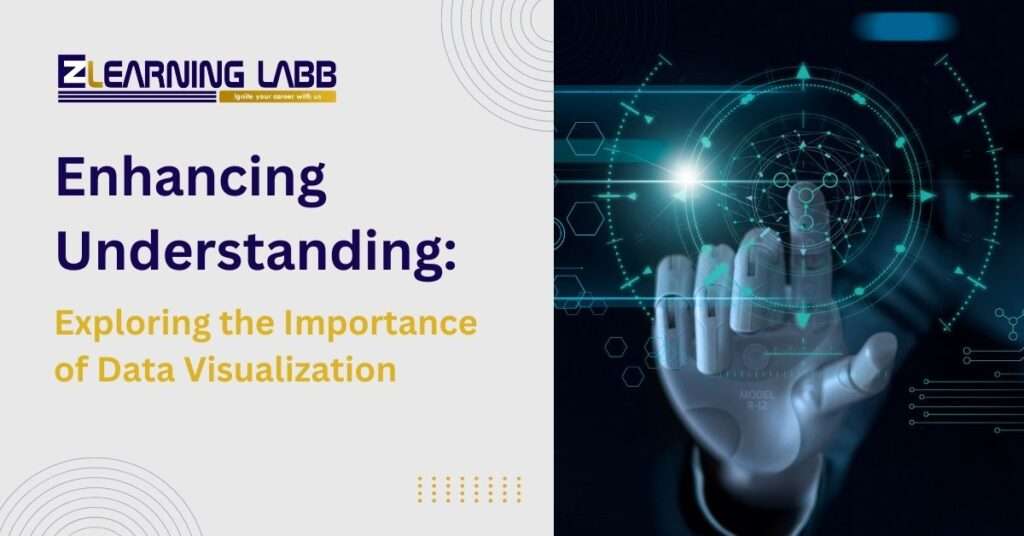Why Data Visualization Matters
Data is at the heart of decision-making in various fields, from business and healthcare to finance and education. However, raw data, in its tabular form, can be overwhelming and challenging to comprehend. This is where data visualization steps in to offer several crucial advantages:
Clarity: Data visualization simplifies complex data by presenting it in a visual format that is easier to grasp. It reveals patterns, trends, and outliers at a glance.
Engagement: Visuals are more engaging and memorable than raw data. They capture the audience’s attention and make the information more accessible.
Storytelling: Effective data visualization tells a story. It allows you to convey a message, highlight key findings, and influence decision-making.
Actionable Insights: Data visualization helps in identifying actionable insights and making data-driven decisions.
Now, let’s explore some key data visualization techniques that can make your insights shine.
1. Select the Right Visualization Type
The first and most critical step in data visualization is selecting the appropriate chart or graph for your data. The choice of visualization type depends on the nature of your data and the message you want to convey. Some common types of charts and graphs include:
Bar Charts: Suitable for comparing data across categories.
Line Charts: Ideal for showing trends and changes over time.
Pie Charts: Useful for displaying parts of a whole or illustrating percentages.
Scatter Plots: Effective for showing relationships and correlations between variables.
Heatmaps: Perfect for visualizing patterns in large datasets.
Histograms: Used for displaying the distribution of a single variable.
Each type of visualization has its strengths and weaknesses, so choose the one that best suits your data and the story you want to tell.
2. Keep It Simple
Simplicity is a fundamental principle in data visualization. Overloading your charts with excessive information can lead to confusion and a loss of impact. Here are some tips for keeping your visualizations simple:
Limit the Number of Data Points: If you have a large dataset, consider aggregating or summarizing the data before plotting it.
Use Consistent Colours: Stick to a simple colour scheme, and ensure that colours have a clear meaning in your visualization. For example, use blue for positive values and red for negative values.
Minimize Labels and Annotations: Include labels and annotations only when necessary. Too many labels can clutter your visualization.
Simplify Legends: If you use a legend, make sure it’s straightforward and easy to understand.
3. Tell a Story with Data
Data visualization is not just about presenting numbers; it’s about storytelling. To make your insights shine, you need to guide your audience through a narrative. Here’s how to achieve this:
Start with a Clear Message: Before creating your visualization, define the message you want to convey. What do you want your audience to learn or understand from the data?
Order Your Data: Arrange your data to tell a logical and coherent story. For example, if you’re showing sales data over time, order the data chronologically.
Use Titles and Headings: Titles and headings provide context and set the stage for your narrative. They should be clear and relevant to the data.
Highlight Key Findings: Use visual cues such as color, annotations, or callouts to draw attention to the most important insights in your data.
Add Context: Provide background information and context to help your audience understand the significance of your findings.
4. Interactivity for Exploration
In some cases, you might want to enable your audience to explore the data themselves. Interactive data visualization tools and dashboards allow users to interact with the data, filter it, and gain deeper insights. Here are some considerations for adding interactivity to your visualizations:
Filters: Implement filters that allow users to select specific data points or time ranges.
Tooltips: Provide tooltips that display additional information when users hover over data points.
Zoom and Pan: For large datasets, allow users to zoom in and pan to focus on specific areas of interest.
Linked Visualizations: Connect multiple visualizations so that interactions in one affect the others. For example, selecting a region in a map could update a corresponding chart.
Interactivity can enhance the user experience and enable deeper exploration of the data.
5. Use Visualization Tools
To create effective data visualizations, you need the right tools. Fortunately, there are many powerful data visualization tools available. Some popular options include:
Tableau: A widely used data visualization tool that offers a range of interactive features and a user-friendly interface.
Power BI: A Microsoft product that enables users to create interactive reports and dashboards.
D3.js: A JavaScript library for creating custom, interactive data visualizations on the web.
Matplotlib and Seaborn: Python libraries for creating static and interactive visualizations. Matplotlib is suitable for a wide range of visualization types, while Seaborn specializes in statistical visualizations.
Plotly: An open-source library for creating interactive visualizations in Python, R, and Julia.
Choose a tool that aligns with your needs and expertise. It’s essential to select a tool that allows you to create the visualizations you envision and is well-suited to your data analysis tasks.
6. Practice Data Visualization Ethics
While data visualization can be a powerful tool for communication, it’s essential to use it ethically. Misleading visualizations can lead to incorrect conclusions and harm decision-making. Here are some ethical considerations:
Avoid Distortion: Be careful with the scaling of axes and the use of 3D effects, as they can distort the perception of data.
Label Accurately: Ensure that axes, data points, and legends are labeled accurately.
Use Consistent Scales: Use consistent scales on your visualizations to avoid exaggerating differences.
Cite Data Sources: Always provide sources for your data, and make sure you have the rights to use it.
Consider the Audience: Tailor your visualizations to your audience’s level of understanding and knowledge.
By following ethical practices in data visualization, you ensure that your insights are not only impactful but also trustworthy.
Conclusion
Effective data visualisation is a powerful tool for making your insights shine. By selecting the right visualization types, keeping your visuals simple, telling a story, adding interactivity, using appropriate tools, and practicing ethics, you can create data visualizations that engage and inform your audience. Whether you’re presenting to clients, colleagues, or the general public, mastering the art of data visualization will help you convey your insights with maximum impact and clarity.





